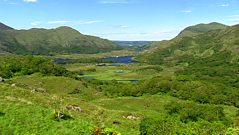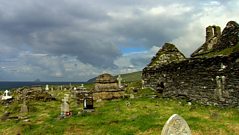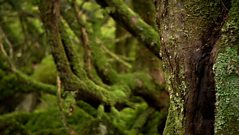
Mini chalk downland
Wildflowers thrive on the dried out ash lagoons of an old London power station.
A few miles downstream from tourist London lies a hidden oasis, in a rather unexpected place. Bill Oddie finds wildflowers on an old industrial site - bird's-foot trefoil, rosebay willowherb, ragwort, goat's rue, buddleia, everlasting pea and viper's bugloss. Why are all these flowers here? This used to be the site of Europe's biggest power station. All round here would have been ash lagoons. All dried out now, the ash provides a completely different soil from what you normally find round London - a mini chalk downland right here in Barking. So you find plants that you'd normally see on heathland, such as yellow wort and centaurie. Soapwort used to be used to wash woollens, and teasel was used to tease up the nap of woollen clothes in medieval times. Natural remedies are made from evening primrose and St John's wort - nature's Prozac. St John's wort got it's name from the knights of St John who used it to heal their wounds when fighting in the crusades. The logic was that it would work because the leaf is perforated with little holes like wounds, so would heal wounds. Lots of Bill's favourite flowers are all within a few miles of where he lives and he never realised it.
Duration:
This clip is from
Featured in...
![]()
大象传媒 Nature
Be captivated, informed and inspired by the world's wildlife.
More clips from Thames
-
![]()
Summer in the city
Duration: 01:01
-
![]()
Stag morning
Duration: 02:48
-
![]()
Burrowing crabs
Duration: 02:11
-
![]()
Yankee doodle duck
Duration: 01:48
More clips from Bill Oddie Goes Wild
-
![]()
Mossy woodland—Series 3, South West Ireland
Duration: 01:59
-
![]()
Chough country—Series 3, South West Ireland
Duration: 03:52
-
![]()
Deserted village—Series 3, South West Ireland
Duration: 01:36
-
![]()
Yew forest—Series 3, South West Ireland
Duration: 01:48










